
Did you know that the man who brought the first electric street light to the United States also invented the first automatically operated wind turbine generator? This innovator was Charles F. Brush. Today, let’s take a closer look at the most famous inventions of this entrepreneur…
A Look into the Life of Charles F. Brush
Charles F. Brush was born onMarch 17, 1849, in Euclid Township, Ohio. His interest in science began at a young age, and he was building electrical devices, such as a static electricity machine, by the time he was 12. One inventor that young Brush was inspired by wasHumphry Davy, inventor of thearc lamp. Brush was in high school when he followed in Davy’s footsteps and built his first arc lamp.
Brush graduated in 1869 from the University of Michigan with a degree in mining engineering and went on towork as an iron ore salesman. During this time, he began experimenting with the design of dynamos (electric generators) — the technology that was later at the center of Brush’s two greatest creations.
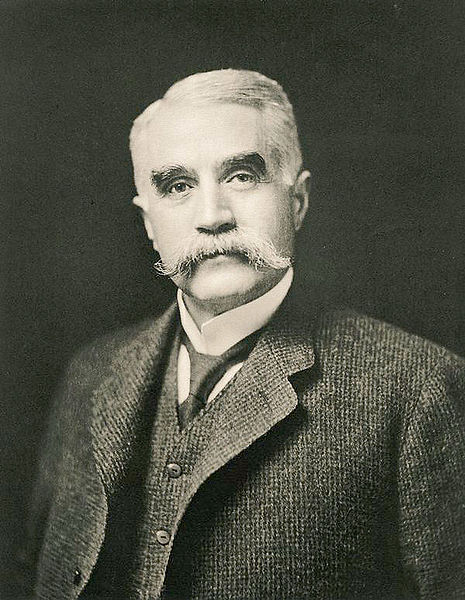
Charles F. Brush. Image in thepublic domainin the United States, viaWikimedia Commons.
In 1875 Brush married Mary Ellen Morris, with whom he had three children. His only son, Charles Jr., conducted research (funded by Brush Sr.) with Charles Baldwin Sawyer on the uses of the element beryllium. Sawyer and Brush Jr. worked together tocreate the material supply companythat was the original predecessor of Materion, one of the modern world’s top suppliers of engineering materials.
Brush Commercializes Street Lights
In the early 1870s, Brushworked toward optimizingthe design of arc lamps and experimented with magnetoelectric machines. He patented his work on improving magnetoelectric apparatus armatures so that the overall device was less bulky, heavy, expensive, and wasteful of mechanical power, as the common models of the time were. Shortly after, Brush began working on a design that combined his interests in electricity, arc lamps, and dynamos: Brush built a dynamo that could be used to power arc lights.
By the late 1870s, Brush patented a dynamo design for arc lights that included a disk-shaped armature, an open coil, and four electromagnets. Parts of the design were inspired by Zénobe Gramme’sdynamoandAntonio Pacinotti’sdynamo with a ring armature. Brush’s design was tested by the Franklin Institute of Philadelphia, and the design was purchased by the institute in 1878. It was considered superior to Gramme’s and Pacinotti’s designs due to it being simpler and easier to maintain.
With his dynamo and the additional improvements he made to arc lights, Brush was able to finalize a design that could be commercialized. He was hired to install the lights in a Philadelphia department store in 1879, and soon after, on April 29 of the same year, he held thefirst public demonstrationin the U.S. of lighting a street electrically. The demonstration was held in Cleveland, Ohio, where Brush positioned and lit 12 lamps around Cleveland’s Public Square. Following the demonstration, the first city to purchase and install the lighting system was Wabash, Indiana.
He continued to travel and demonstrate his lighting system in major cities, and over the following year, more than 5000 of Brush’s light system had been installed, making up 80% of operating arc lamps at the time.
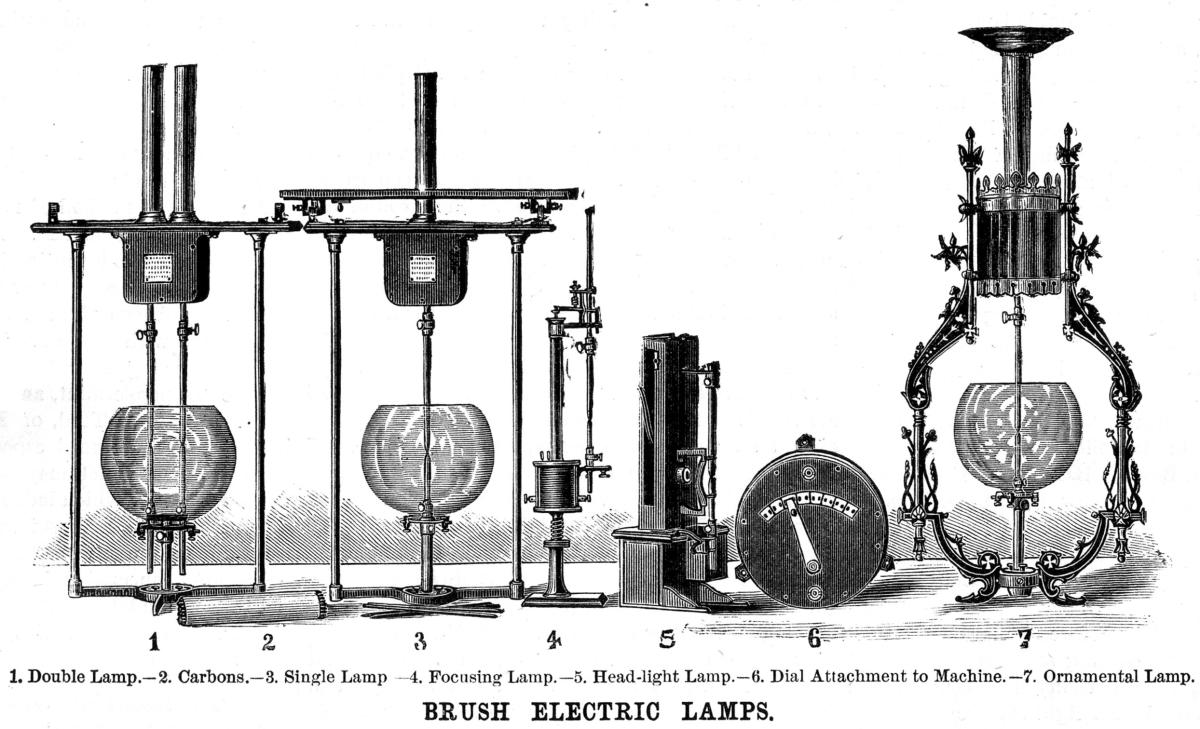
Electric arc lights made by the Brush Electric Company in Cleveland, Ohio (founded in 1880). Image licensed in thepublic domainin the United States, viaWikipedia.
By 1881, the Brush arc light system was installed in several major cities, including New York, Boston, San Francisco, and many more.
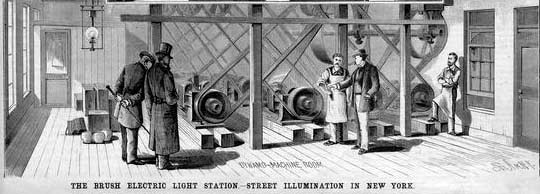
The dynamo room in the Brush Electric Company’s central power plant in New York. Image licensed under thepublic domainin the United States, viaWikimedia Commons.
Powering the Charles F. Brush Mansion
In 1884, Brush built his family a home on Cleveland’s Euclid Avenue. This avenue earned the nickname “Millionaires’ Row” because of all the famed people who resided there (John D. Rockefeller included) and because of how extravagant the mansions were — and Brush’s home was undoubtedly a spectacle, for a few reasons.
Along with the impressive exterior and interior design of thethree-story home, one major highlight was the basement that Brush used as his laboratory. There, he displayed his many inventions and experimented with different technology.
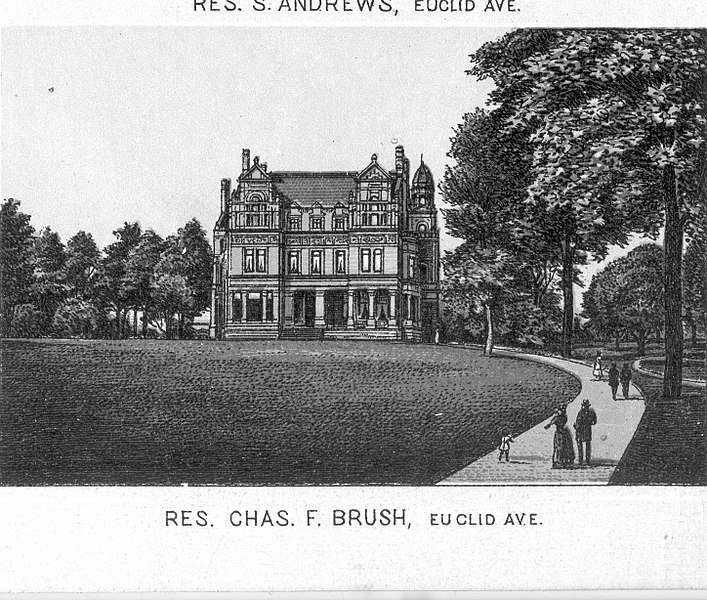
A sketch of the Charles F. Brush mansion. Image in thepublic domain, viaWikimedia Commons.
The most prominent factor of the mansion, however, was not the size of it, the décor, or even the basement laboratory. What really made this mansion so eminent was that it was thefirst home in Clevelandto have electricity, and this electricity was powered by the world’s first automatically operated wind turbine generator, invented by Brush himself.
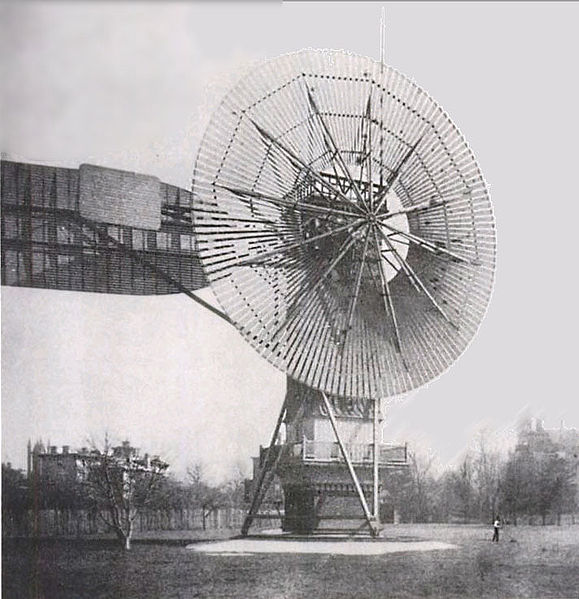
Brush’s wind turbine. Image licensed under thepublic domainin the United States, viaWikimedia Commons.
Thewind turbine utilizeda fan-shaped wheel constructed with 144 cedar blades. A pulley system connected the wheel to a dynamo so that each rotation of the wheel sent the dynamo into effect, generating electricity that flowed through 12 batteries held in Brush’s basement. The windmill was able to generate about 1200 W, and it didn’t fail once in its 20 years of use.
Brush’s Legacy
Brush’s innovations and their global impact did not go without recognition. He was made a chevalier of the Legion of Honor of France in 1881, and in 1899 he received the Rumford Prize of the American Academy of Arts and Sciences. In addition, he received the Edison Medal in 1913 and was inducted into theNational Inventors Hall of Famein 2006.
For his advancements in electric lighting and powering wind turbines, let’s take a moment to remember Charles F. Brush and wish him a happy birthday!
Further Learning
- Read about other important inventors on the COMSOL Blog:
- Oliver Heaviside, who invented the coaxial cable
- Norbert Rillieux, who invented the multiple-effect vacuum evaporator



Comments (0)